1. Egg Coddlers
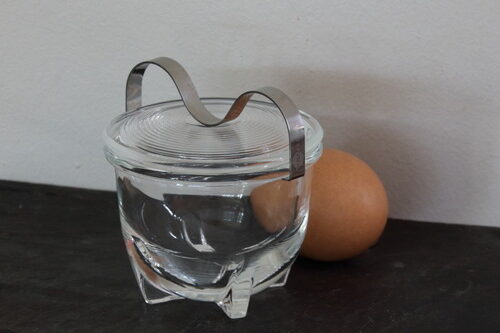
Egg coddlers were once the go-to gadget for creating the perfect soft-boiled egg, a breakfast staple for many families. Made of porcelain or glass, these charming little pots featured a screw-on lid that kept the egg secure during the gentle boiling process. The beauty of the egg coddler was in its simplicity and ability to achieve a delicate, creamy texture that was hard to replicate using other methods. Over time, however, they were replaced by modern egg cookers and microwave methods, which offered quicker results with less mess. Despite their decline in use, egg coddlers have experienced a resurgence as collectible vintage items.
Enthusiasts love their quaint designs and historical significance, with many featuring intricate patterns, including floral motifs or geometric designs. They are often considered a piece of kitchen nostalgia, offering a glimpse into simpler, slower cooking techniques. One of the most sought-after varieties is from Royal Worcester, a renowned British porcelain manufacturer. If you ever come across one at a flea market or estate sale, it’s worth checking for markings to confirm its authenticity. Vintage coddlers often fetch a premium price due to their rarity and craftsmanship. As collectible items, they also make delightful additions to a retro-themed kitchen or as charming display pieces on a dining table.
2. Butter Molds
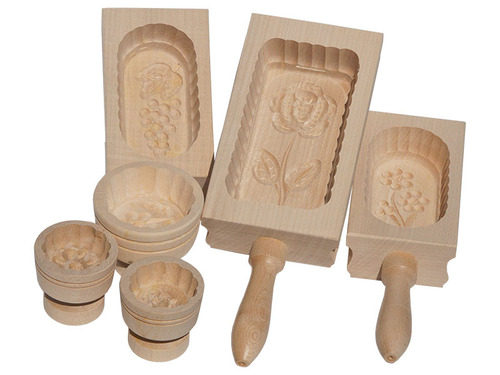
Butter molds date back to a time when butter was not packaged in neat, uniform sticks but rather molded by hand. These wooden implements were primarily used to shape butter and sometimes stamped with decorative patterns, providing a visually pleasing touch to everyday meals. In many farmhouses, these molds were used to create butter into intricate shapes or to mark it with symbols, often floral or geometric in design, which showcased the skill and artistry of the butter maker. While they were originally a necessary tool, they also played a role in demonstrating a family’s wealth and attention to detail. Antique Butter Molds are widely collected today for their historical and aesthetic value.
Today, butter molds are highly prized by collectors who appreciate their rustic, handcrafted appeal. Many people seek out antique molds for their aesthetic value, often using them as décor in country-style kitchens or as vintage pieces on display in a farmhouse setting. These molds can be made of a variety of woods, each with a distinct character, and their age often adds to their charm. However, it’s important to care for them properly, as the wood can dry out and crack over time. If you are fortunate enough to inherit one, you can preserve its historical value by ensuring it remains well-maintained and stored in a dry, cool place. Butter molds have become more than just functional items; they are a reflection of a bygone era of home craftsmanship.
3. Rotary Egg Beaters
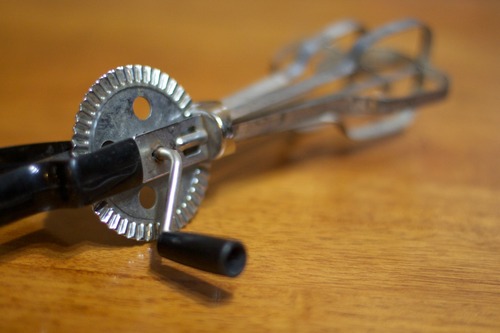
Rotary egg beaters were an essential kitchen tool long before the convenience of electric mixers became widespread. These hand-cranked devices were used to whip eggs, mix batters, and even froth cream, offering a manual solution to tasks that would later be done with more modern machinery. Vintage rotary beaters are often crafted from durable metal with wooden handles, making them sturdy and reliable. Despite the evolution of kitchen technology, many find that these old-fashioned beaters are still functional and provide a tactile cooking experience. Their simplicity makes them appealing to those who enjoy a hands-on approach to cooking, evoking memories of slower, more deliberate preparation methods. For a look at historical brands, check out Dover and Androck Beaters.
Antique models, particularly those from brands like Dover or Androck, are often collected for their craftsmanship and nostalgic appeal. These beaters are easy to use, providing the user with more control over the mixing process, which can be especially satisfying when preparing batters for cakes or whipped cream. When hunting for a vintage rotary beater, collectors often look for those with ornate details, such as decorative handles or specialized attachments, which increase their value. Whether used in the kitchen or displayed as a vintage piece, these beaters serve as a reminder of a time when kitchen gadgets required a bit of manual effort and ingenuity.
4. Meat Safes
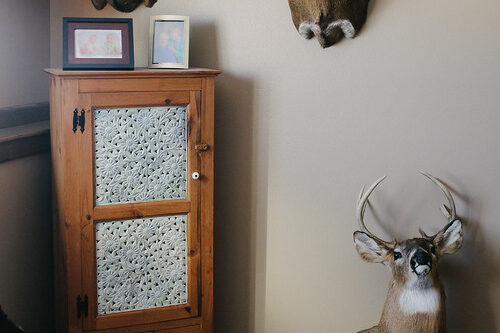
Before the invention of electric refrigerators, meat safes were a critical part of every home’s food preservation system. These ventilated wooden cabinets were designed to store perishable foods like meat, dairy, and vegetables, and kept them cool by allowing for air circulation while protecting them from pests. Meat safes were typically made of wood and had mesh or wire screens to prevent flies and insects from contaminating the food inside. With refrigeration becoming the norm, these old-fashioned safes are no longer necessary for food storage, but they’ve found new life as vintage storage pieces or rustic display cabinets. Many antique dealers specialize in finding and restoring meat safes.
Restored versions, particularly those with ornate details or a history tied to specific regions or families, are highly sought after by antique collectors. They often carry a sense of history, offering a glimpse into how people in the past navigated food preservation long before the convenience of modern appliances. Many antique stores and flea markets feature these vintage safes, where they are repurposed as storage units for linens, books, or even as decorative accents in a dining room or kitchen. The craftsmanship involved in creating meat safes can be astonishing, with some featuring hand-carved details and expertly crafted mesh, making them highly prized in the world of antique collecting.
5. Cherry Pitters
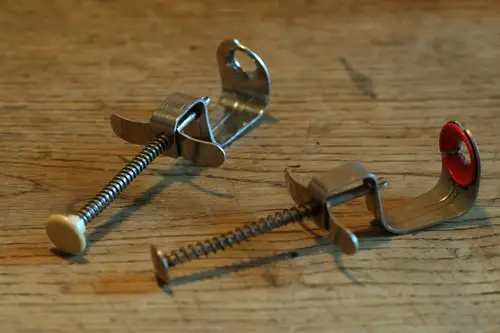
Cherry pitters were once indispensable tools for anyone who made pies, preserves, or any dish that involved cherries. These small, handheld devices made it possible to remove the pits from cherries quickly and efficiently, saving considerable time and effort compared to doing it by hand. Typically constructed from cast iron or aluminum, these vintage models were designed to last and still hold up today, offering collectors both functionality and historical value. Collectors prize vintage cherry pitters, especially those that feature intricate designs or original paintwork, as they often reflect the quality craftsmanship of their era. You can explore more on vintage cherry pitters.
Some cherry pitters are designed to pit several cherries at once, while others are more focused on precision, making them a valuable tool for those who prefer to preserve the fruit without damaging its delicate flesh. While modern electric pitting machines have replaced these manual devices in many kitchens, vintage cherry pitters continue to be popular among enthusiasts who appreciate the beauty and efficiency of older tools. For many collectors, finding a pitter that has been well-preserved, complete with its original packaging or instruction manual, adds to the item’s appeal. These tools are more than just functional devices; they embody a simpler time in food preparation when the act of canning or baking was a more deliberate, hands-on experience.
6. Cake Breakers
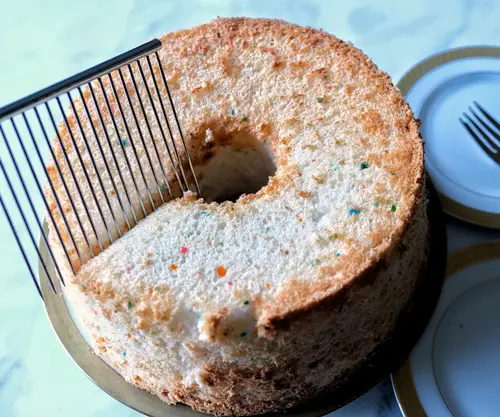
Cake breakers were designed to gently cut delicate cakes like angel food or sponge cakes without crushing or damaging them. These tools, with their long, thin prongs, allowed bakers to slice through fluffy cakes with ease, creating even, clean slices. In an era before serrated knives and cake servers, cake breakers were the tool of choice for bakers who wanted to maintain the light, airy texture of their creations. Vintage cake breakers, often made with handles of Bakelite or silver, are now highly sought after by collectors for their nostalgic value and elegant design. For more on cake breakers, visit Vintage Cake Tools.
The fine craftsmanship of these tools makes them a beautiful addition to any vintage kitchenware collection. Today, cake breakers are often viewed as relics of a bygone era, offering a glimpse into the refined dining traditions of the past. For collectors, the appeal of these vintage items lies not only in their historical significance but also in their aesthetic value. Sets that include matching cake forks are particularly prized, as they add an extra layer of elegance to any display. While modern cake cutting tools have rendered the cake breaker less necessary in the kitchen, many still appreciate the charm of using these vintage items for special occasions or as part of a vintage-inspired tea party. The combination of functionality and beauty makes the cake breaker a standout piece in any collection.
7. Ice Picks

Ice picks were once essential tools in households that relied on large blocks of ice to keep food and beverages cool. Before refrigerators with automatic ice makers became widespread, people used ice deliveries to stock up on large blocks that needed to be broken apart for use. Ice picks, with their sharp, pointed tips and sturdy handles, allowed users to chip off pieces of ice with precision. Today, most people rely on modern refrigerators to make ice, but vintage ice picks have become valuable collectors’ items that evoke a sense of nostalgia for the days before easy access to ice. Discover more about ice picks at Ice Pick Collecting.
These tools are often beautifully crafted, with handles made of wood, metal, or Bakelite, and some even bear branding or logos from old ice delivery companies. Ice picks are not only functional tools but also serve as conversation pieces, providing a window into the past when keeping things cool was a labor-intensive process. Many collectors search for ice picks with unique or rare markings, which can significantly increase their value. They’re often displayed in kitchens or bars as decorative items, reminding us of the bygone days of ice delivery services. Despite their historical significance, ice picks continue to be useful tools for breaking apart blocks of ice, particularly for those who prefer the old-fashioned method of ice preparation. Whether used as a functional tool or as a vintage décor piece, ice picks remain a symbol of a time when domestic life was more dependent on manual tools.
8. Toast Racks
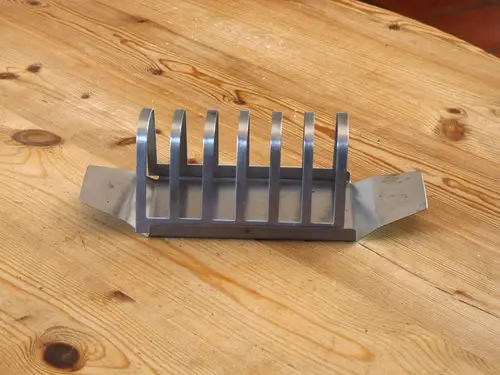
Before electric toasters became a common kitchen appliance, toast racks were used to hold slices of bread fresh from the oven or hearth. These elegant holders kept slices upright, allowing air circulation around each piece to keep the toast crisp and prevent it from becoming soggy. In an era when meals were more formal, toast racks were considered essential for a proper breakfast setting, adding both functionality and style to the dining table. Today, they may no longer be necessary in the kitchen, but they have found a second life as decorative objects or functional organizers. Toast Rack History explores the history of these charming devices.
Vintage toast racks, particularly those made of silver or porcelain, are highly prized by collectors for their aesthetic appeal and craftsmanship. In modern times, they’ve been repurposed for other uses, such as holding letters, napkins, or even small kitchen tools. While most people now use electric toasters for their convenience, the old-fashioned elegance of a vintage toast rack offers a charming alternative for those who want to bring a touch of class to their kitchen or dining area. The appeal of toast racks lies not only in their practical purpose but also in the historical connotations they carry, serving as reminders of past dining traditions. Many collectors appreciate them for their unique designs, which range from simple, minimalist styles to ornate, detailed patterns that reflect the fashion of their time.
9. Milk Glass Juicers
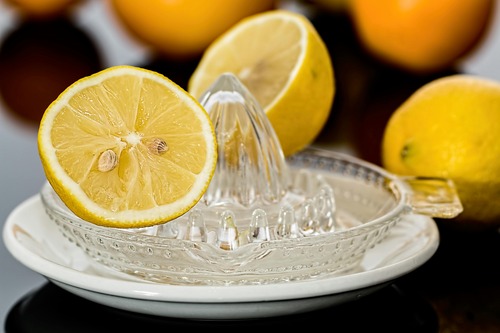
Milk glass juicers were a common kitchen tool for squeezing fresh citrus juice before the convenience of electric juicers. These small, handheld devices were made from opaque white glass, which was not only durable but also aesthetically pleasing. They were designed to fit comfortably in the hand, with ridges on the top to help extract juice from citrus fruits. While modern juicing methods have largely replaced these vintage juicers, they are still highly sought after by collectors of antique kitchenware. Companies like Fire-King and Anchor Hocking, known for their quality glassware, produced many of the most recognizable examples of these juicers. More on their history can be explored at Vintage Milk Glass Juicers.
In addition to their functionality, these juicers often feature intricate patterns, such as floral motifs or geometric designs, which make them particularly attractive to collectors. Many enthusiasts seek original pieces from renowned manufacturers, as these are often more valuable due to their rarity and craftsmanship. Though many people now use electric juicers or plastic alternatives, vintage milk glass juicers are still highly functional, particularly for those who enjoy the tactile experience of hand-juicing their citrus fruits. They also make beautiful, nostalgic display pieces in kitchens or dining rooms, adding a touch of retro charm. Whether used for their original purpose or as collectible items, milk glass juicers continue to be appreciated for their blend of practicality and beauty.
10. Potato Mashers
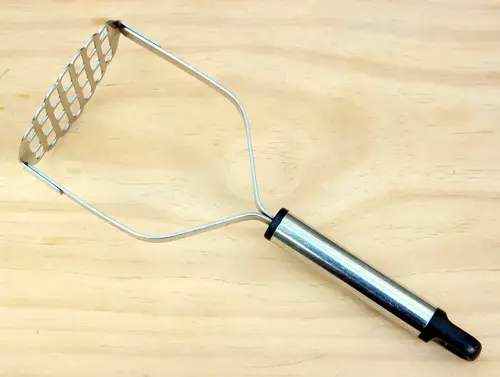
Potato mashers were once a kitchen essential for creating the perfect mashed potatoes, a dish that has been a staple in many households for generations. Before the advent of electric food processors, a good masher was key to achieving smooth, lump-free mashed potatoes. Vintage potato mashers often feature sturdy handles made from wood or metal, with mash heads in various shapes such as grids, spirals, or even simple flat plates. These designs were not only functional but also meant to withstand the rigors of repeated use in the kitchen. While most people today rely on modern tools like electric blenders or stand mixers, a well-crafted masher still holds value, especially among those who appreciate hands-on cooking methods. Vintage Potato Mashers are a nostalgic reminder of simpler times in food preparation.
In addition to their practicality, vintage potato mashers often appeal to collectors for their craftsmanship and design. Some unique mashers were produced by well-known kitchenware brands, which adds to their collectible value. The shape and design of the mash head could vary, with spiral mashers being particularly favored for their ability to create a smooth, even texture without over-mashing the potatoes. Wooden-handled mashers, especially those with intricate carvings or markings, are highly prized by collectors for their durability and aesthetic appeal. Despite the rise of electric appliances, vintage potato mashers continue to be valued by home cooks who prefer the tactile experience of manually mashing their potatoes. Whether as a functional tool or a collectible, these simple devices evoke nostalgia and remain a beloved part of kitchen history.
11. Jelly Molds
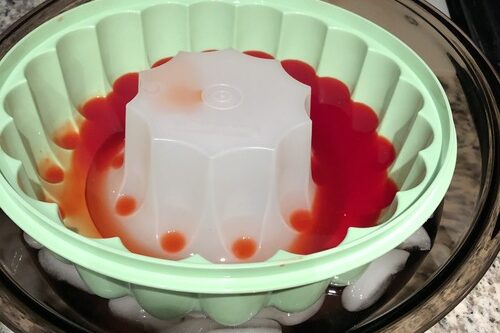
Jelly molds were essential kitchen tools for creating molded desserts like gelatin or aspic. In the early 20th century, molded gelatin desserts became incredibly popular, and as a result, jelly molds were an integral part of many households. These molds were made from a variety of materials, including tin, aluminum, and glass, and came in a range of shapes, from simple geometric designs to more elaborate, sculptural forms. Over time, however, as gelatin desserts fell out of favor, jelly molds were phased out, but they remain a favorite among collectors who appreciate their historical significance and aesthetic appeal. Vintage Jelly Molds are still highly valued by collectors.
Vintage jelly molds are highly sought after, particularly those from renowned manufacturers like Wedgwood or Fostoria. Collectors appreciate the variety of designs available, with some molds reflecting the trends of the period, such as Art Deco patterns or floral motifs. Some molds are even marked with the company’s logo or name, which can increase their value. Today, jelly molds are often used as decorative pieces in kitchens or dining rooms, serving as reminders of the past when elaborate, molded desserts were all the rage. For those who enjoy retro cooking, these molds are still used to create visually stunning gelatin or aspic dishes, bringing a touch of vintage glamour to modern meals. Whether used in the kitchen or displayed as collectible items, jelly molds remain an enduring symbol of a more elegant culinary era.
12. Coffee Percolators
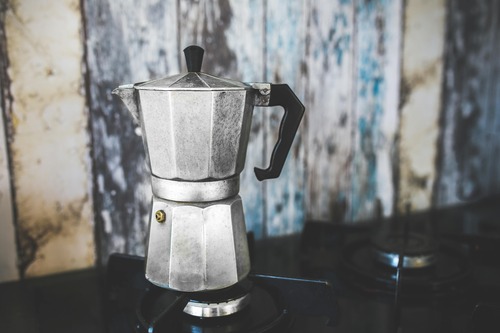
Coffee percolators were once the preferred method of brewing coffee long before the invention of drip coffee makers and single-serve machines. These stovetop devices used boiling water to cycle through coffee grounds, creating a rich and bold brew. The process, which relied on the water being forced through the grounds repeatedly, produced a strong, full-bodied cup of coffee that was beloved by many. Today, coffee percolators have been largely replaced by more modern brewing methods, but vintage percolators remain highly collectible. Brands like Pyrex and Revere Ware are particularly popular in the vintage coffee market, offering a combination of style and function. Vintage Coffee Percolators offers further insights into these charming devices.
For many coffee enthusiasts, vintage percolators are more than just a piece of kitchen equipment; they are a connection to the past and a reminder of a time when coffee brewing was an involved, ritualistic process. Collectors are drawn to these percolators for their unique design, often featuring glass or enamel components that allow the user to observe the brewing process. Some models even have a built-in glass knob on top, which would change color as the coffee brewed, giving the user an indication of its strength. Though less common in modern kitchens, these percolators are still beloved by coffee purists who enjoy the nostalgic, hands-on brewing experience they offer. Whether used daily for their rich flavor or displayed as vintage decor, coffee percolators maintain a place in the hearts of collectors and coffee lovers alike.
